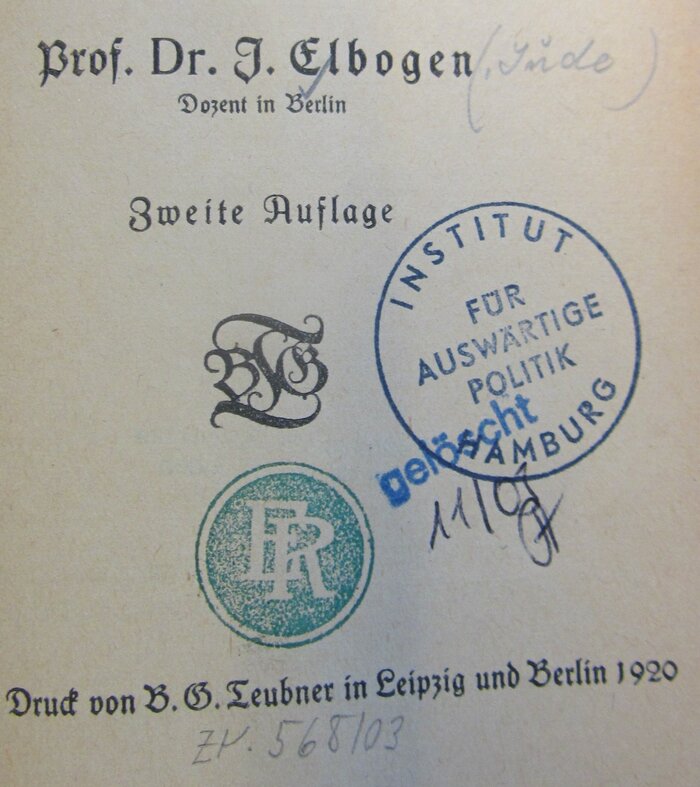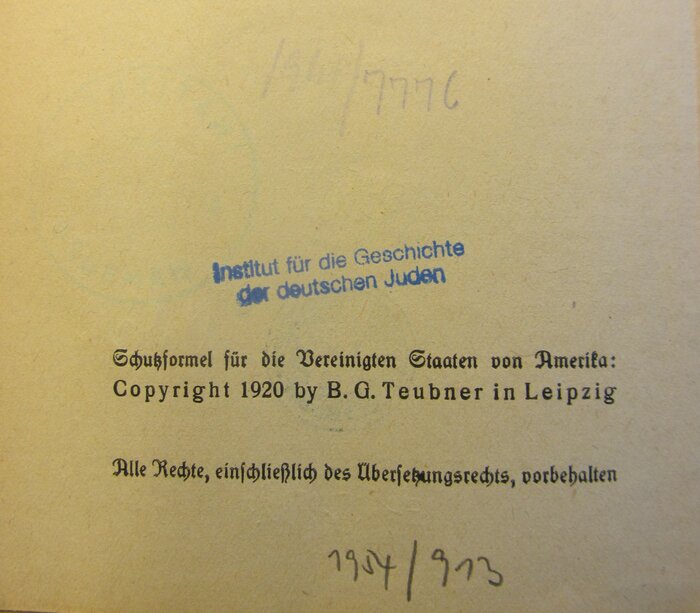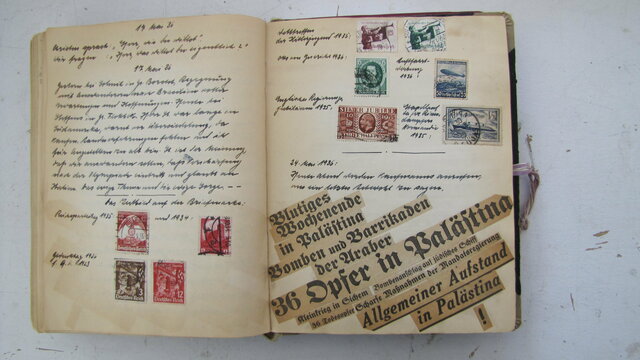The Institute for the History of the German Jews conducted extensive research into Nazi looted assets in its book holdings as part of the project “Nazi Looted Assets in the Library of the IGdJ.” The project was funded in the period from 1 September 2013 to 31 August 2016 by the Federal Government Commissioner for Culture and the Media through the German Lost Art Foundation (Stiftung Deutsches Zentrum Kulturgutverluste) (until 31 December 2014, Arbeitsstelle für Provenienzforschung [Coordination Office for Provenance Research]) based on a resolution of the German Bundestag. This was followed from 1 September 2016 to 31 August 2017 by the “Digitalization and Publication of Nazi Looted Assets Research Findings” project, which was also funded by the Stiftung Deutsches Zentrum Kulturgutverluste.
In the context of our project entitled “NS-Raubgut in der Bibliothek des IGdJ” (“Nazi Looted Assets in the Library of the IGdJ”), 945 suspicious provenance references emerged that pointed to Nazi confiscated assets or Nazi looted assets. In the course of our research, we were able to identify about 200 books as Nazi looted assets. In very few of the Nazi looted assets cases, we succeeded in identifying owners or heirs, which was a matter of time given the volume of provenance clues. The majority of books categorized as non-specific simply lack definitive clues to Nazi looted assets. Often, these are dedications or notes consisting only of first and/or last names.
With a presentation of our results in the Looted Cultural Arts database, we hope on the one hand to clarify possible cases of Nazi looted assets and to establish contact with owners or heirs. On the other hand, we view this as an opportunity to make our results accessible to the public in the long term. This applies in particular to those provenance indications for which, according to our research, a suspicion of Nazi looted assets could be ruled out. The Lost Art Database is explicitly not intended for these non-looted assets cases. In addition, we want to contribute our expertise acquired in recent years, supporting further provenance research projects in supraregional cooperation with the FU Berlin, the University of Potsdam, the Library of the Berlin New Synagogue Foundation – Centrum Judaicum, the Berlin Central and Regional Library, and other institutions.
Nazi Looted Assets in the Library of the IGdJ – the Example of Dr. Erwin Rawicz
The book entitled Geschichte der Juden seit dem Untergang des jüdischen Staates (“History of the Jews since the Fall of the Jewish State”) (Ismar Elbogen, 1920) has had a remarkable journey into the library of the IGdJ. Dr. Erwin Rawicz (1897–1981), who worked as a lawyer in Berlin, stamped his name in the back of the book.
The Rawicz family managed to escape to the USA in October 1938. In 1941, the Hamburg Gestapo had the family’s moving containers, stored in the port, opened by force and auctioned off by the Wilhelm Wehling Company. In this connection, the Hamburg State and University Library (SUB) was generously bestowed with books from that source.
After World War II, the volume was given to the “Hamburg Institute for Foreign Policy” (“Institut für Auswärtige Politik Hamburg,” call number: 1954/913), which was renamed Institute for International Affairs of the University of Hamburg” (“Institut für Internationale Angelegenheiten der Universität Hamburg” – IFIA) in 1973.
In 2003, the book finally became part of the IGdJ’s book holdings as a gift from the IFIA. So far, the search for heirs has been unsuccessful.






